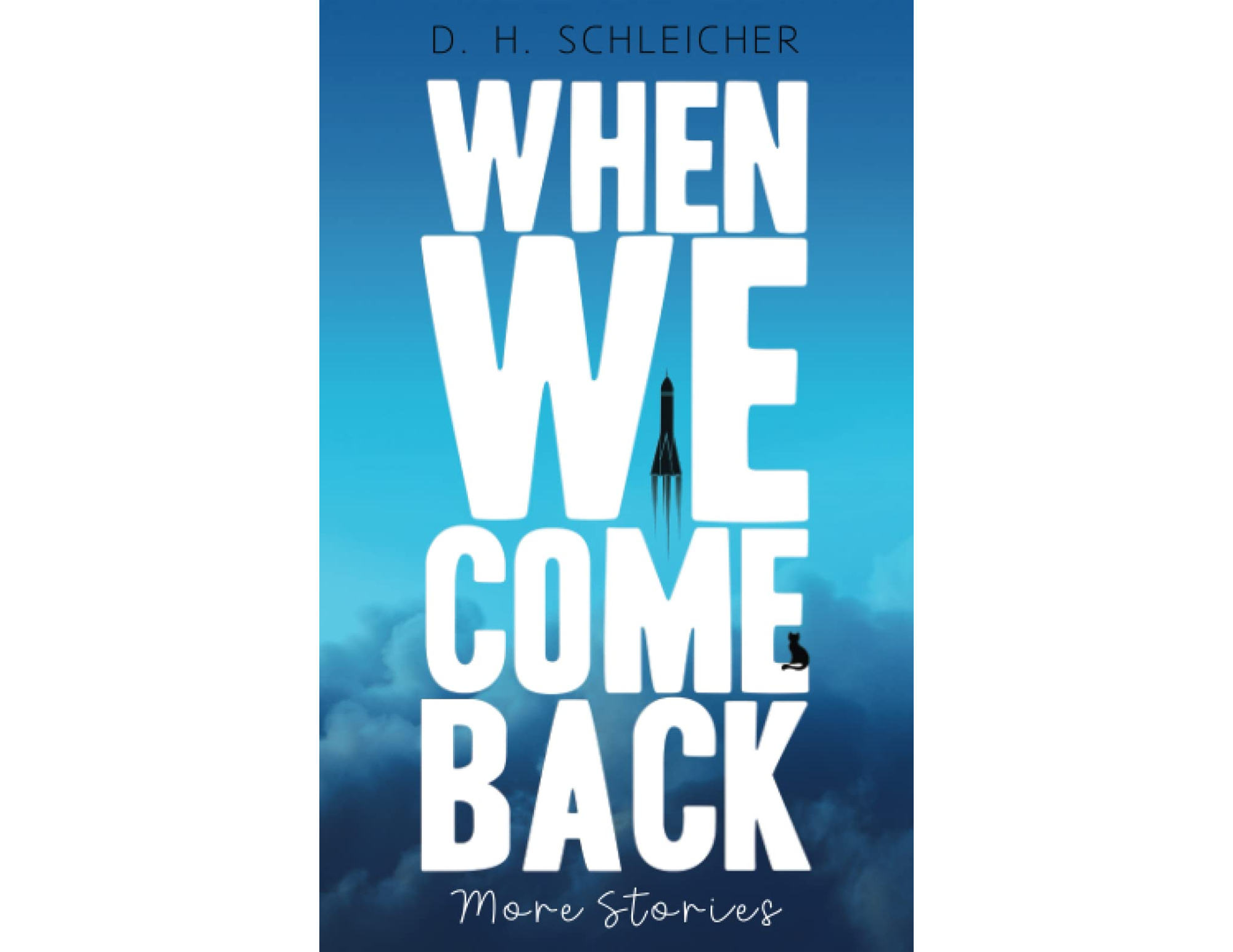In 2020, independent author D.H. Schleicher released his first short story collection, And Then We Vanish, which navigated “waves of mystery, violence, and the absurd that filter into [the characters’] everyday lives,” according to Schleicher’s synopsis. Three years have passed since then, and Schleicher has released a new collection of literary and speculative fiction, titled When We Come Back.
With characters who, according to the publisher’s description, “struggle to connect, find meaning, and move forward in the face of sometimes tragic and always shifting headwinds,” Schleicher’s stories explore many settings—a suburban neighborhood during the height of the COVID-19 pandemic, Atlantic City in the summer of 2000, and a polluted highway in the dystopian megalopolis Philabaltington, just to name a few. Schleicher’s focus on the northeastern United States grounds his collection in a distinctly American yet humanistic ethos: advancements in technology combined with human instinct will lead to the next stage in humanity’s evolution, and in technology’s absence, modern humanity may be unable to adapt to future disasters.
The theme of humanity’s evolution is most apparent in the collection’s final story, titled when the door opens, in which the reader follows the dual narratives of a 70-year-old man and a 10-year-old boy. The man and his wife are enjoying their retirement along with a device called iEverything, which is like Alexa and Google Home except it’s able to prepare the man’s morning coffee for him. It’s also able to play relevant media on a holographic screen in response to the man’s inquiry about a strange dream he had. Revealing that it also had a dream, iEverything reveals through the holographic screen that the Internet in the story’s world is so expansive that it will inevitably become sentient, and it’s possible that the Internet has already reached the point of sentience. This technology has existed for quite some time, as iEverything was able to identify a song that the man had mentioned in a diary entry 60 years prior.
Meanwhile, the 10-year-old boy is carrying the weight of a family tragedy, and he has a strange dream as well, consisting of a mechanical whooshing sound. It’s implied that his story is set even further in the future than the man’s, as the man’s wife has a singing bowl that one of the boy’s peers describes as being ‘ancient.’ The dream is revealed to be evidence of a connection between the man and the boy, and as the Internet has become sentient, it’s aware of a need for the man, on Earth, to send a message to the boy, a resident of a human colony that had not yet been established.
I consider the ethos of When We Come Back to be American in nature because it emphasizes individualism—even for the Internet—while maintaining the significance of modern human connection through technology. As the collection’s finishing piece, when the door opens acts as the optimistic side of Schleicher’s vision for humanity’s future.
The outlook on humanity’s future portrayed in when the door opens contrasts starkly with the previous story, commuter’s sentence, set in the aforementioned ‘Philabaltington,’ formed from a chain of events that began with the ice caps melting and the Earth’s axis shifting decades prior. Many northern Europeans, whose home countries were frozen over by the ‘polar shift,’ escaped to the northeastern U.S., where Boston was too cold and NYC was flooded, leaving Philadelphia, Baltimore, and Washington, D.C. as the massive center of a new country, the United States of the Western Hemisphere. There is also no Internet due to a series of solar flares that destroyed most of the world’s satellites.
The story focuses on a girl named Sam whose family is attempting to travel back to their home in Oklahoma, but due to a lack of walkability and public transportation in Philabaltington, they are stuck in never-ending traffic. Eventually, people begin getting out of their cars and lining up to receive envelopes. A young woman pulls a red piece of paper from her envelope, which makes her the lucky recipient of… a sacrificial killing. The event is celebrated by everyone except Sam, who is shocked by what she witnesses, but as Schleicher puts it, “some would rather die than sit in traffic.”
By showcasing the potential aftermath of climate change, Schleicher demonstrates the capacity of humanity to initiate its own downfall in the face of technological regression. In the modern age, Schleicher perceives humanity and technology as working in tandem to forge a path forward; without technology, he believes that humanity will continue to adapt, but also that humans will be held back by their unwillingness to live life in their newfound conditions.
Not every story in When We Come Back has sci-fi or catastrophic elements as distinct as those found in when the door opens or commuter’s sentence, but after reading the stories together, it becomes clear that each story captures human nature in different ways, with many incorporating humanity’s relationship with modern technology. The characters throughout the stories are set in different time periods, yet they retain relatability through the struggles they face. Overall, When We Come Back is an insightful look into the past, present, and potential future for humanity and modern technology, capturing the different ways that technology impacts, and may continue to impact, our lives.
When We Come Back: More Stories
D. H. Schleicher
Independently published
Published January 1, 2023
136 pp.

Beck Schneider (he/him) is a second-year Drexel student pursuing a BA in English with a concentration in writing. He recently began his first co-op with Drexel’s Office of Postdoctoral Affairs and became a Peer Reader at the Drexel Writing Center. In his free time, he enjoys making Spotify playlists and writing poems, some of which have appeared in Drexel’s undergraduate literary magazine Maya. He soon hopes to launch his blog Brocamorphosis with writings about his relationship with language and his experiences as an autistic person.
